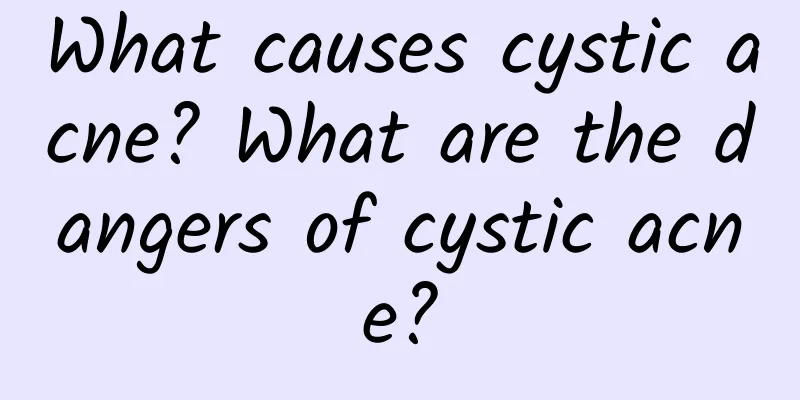What causes cystic acne? What are the dangers of cystic acne?

|
Acne, also known as pimples, mostly occurs during adolescence. When acne develops into cystic acne, it is a severe form of acne. So what causes cystic acne? What are the dangers of cystic acne? Causes of Cystic Acne: The main causes of cystic acne: endocrine disorders, excessive sebum secretion and microbial infection in hair follicles are the main factors for the onset of acne. Current clinical findings show that androgen plays a very important role in the occurrence, development and persistence of cystic acne. Other causes of cystic acne: poor personal hygiene, tight clothing that causes excessive friction between clothes and the body, use of cosmetics that are not suitable for your skin, excessive intake of high-sugar, high-fat foods, drinking spirits, cocoa, coffee and other hot beverages can all lead to the appearance of cystic acne; some friends who often use oil makeup, digestive disorders, and constipation can promote the occurrence and development of cystic acne. In addition, some people may develop cystic acne due to long-term use of drugs containing bromide, iodide and corticosteroids. Some people develop cystic acne due to contact with various lubricating oils, diesel, coal tar, coal tar asphalt, petroleum asphalt and other chemicals due to work. Most of them gradually develop acne after several months of contact. Symptoms and location of cystic acne: The symptoms of cystic acne need to be determined. For some people, the cysts only appear occasionally, while for others, they may last a long time and be painful. Cystic acne mainly occurs on the cheeks, forehead and nasolabial folds, followed by the chest, back and shoulders. Cystic acne risks: Everyone loves beauty, and teenagers are especially sensitive to it. Friends who suffer from cystic acne often feel that they can't hold their heads up, have low self-esteem, and even walk with their heads down. If cystic acne is not treated for a long time, it will not only affect your appearance, but also bring other harms: 1. Some lesions may cause sinus tracts or scars on the face with one or more openings on the surface that secrete serous or purulent secretions. These skin lesions can merge into large pieces, and if not controlled and treated in time, they can easily form obvious sunken scars. 2. Severe damage caused by cystic acne can cause partial atrophy of facial skin, resulting in scars with a diameter of more than 5 cm, capillary dilation on the surface, and even atrophy of some scars, which can form keloids. 3. Some cystic acne may develop papules, pustules, nodules again on the basis of old scars, and may even cause secondary infection, making the disease protracted and difficult to heal. 4. Cystic acne may also induce other complications, such as scalp perforated abscess folliculitis, perifolliculitis, and hidradenitis suppurativa, which are usually referred to as follicular occlusive triad, making the treatment of cystic acne much more difficult. |
<<: Symptoms of invisible herpes zoster and common folk remedies for treatment
>>: Edema caused by kidney deficiency - Kidney deficiency and water retention syndrome
Recommend
How to relieve insomnia by taking hormones?
We all know that hormonal drugs are very irritati...
What should I do if I sprain my ankle? Hot or cold compress?
Many people think that a sprained ankle will be f...
How to reduce finger joint lines
Many people have abundant lines and joints on the...
The best Chinese medicine for premature ejaculation
Premature ejaculation is a shameful thing for men...
What should I do if my child has repeated high fever due to viral infection?
Children's physical health is prone to some p...
Fear of cold on hot days
Many people, especially female friends, often hav...
What to do if the middle-aged and elderly have kidney deficiency
Middle-aged people are most likely to suffer from...
Why does an 8-year-old child move too much when sleeping at night?
If an eight-year-old child is always moving aroun...
Reactions after moxibustion at Zusanli
In daily life, moxibustion is very familiar to ev...
How to make fish gelatin powder
Many people may not know about fish gelatin powde...
How are nasal polyps related to other nasal diseases?
Some diseases will cause other complications if y...
Symptoms of water breaking in late pregnancy
In the late stages of pregnancy, it is common to ...
Radiofrequency treatment of cervical spondylosis
If you do a job for a long time, such as always w...
Treatment of acute pharyngitis
Acute pharyngitis is an acute inflammation that m...
Daily 12-hour health maintenance method
In traditional Chinese medicine theory, not only ...









